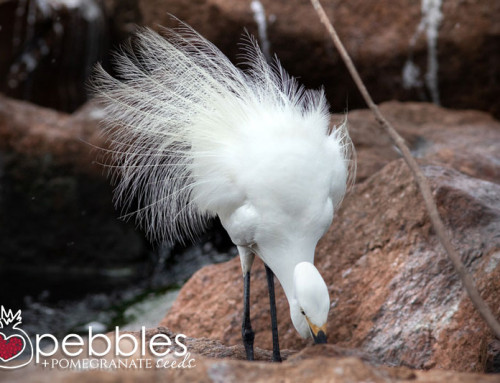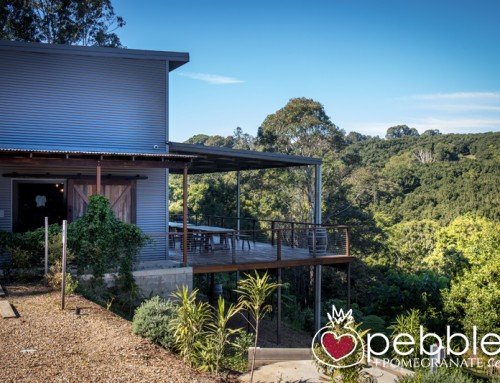I love a good roadtrip, and a visit to Bunya Red Farm near Kingaroy was the perfect incentive.
Having discovered Bunya Red Farm’s fabulous capers and caperberries, some time ago, I was keen to find out more about their production and discover more about Mandy Evan’s journey of innovation that led her to farm capers and caperberries commercially.
I always thought capers were a seaside plant. I am not sure why. Probably because they are salty. That statement defies logic, and clearly, I hadn’t really placed any thought in it at all because the salt is added to the caper as a means of preserving it after it is picked – it is not naturally salty at all.
While capers do grow in some coastal regions, they are much more drawn to an arid landscape, and a more often than not, Mediterranean climate, which doesn’t immediately make me think of Kingaroy.

I also imagined more of a shrub. Instead, the caper bush’s fleshy foliage sweeps from a central point and the vine-like branches sprawl out around its base. It looks a bit Cousin It-ish, which made the plant more than a little endearing to me. It is quite cute.

Quite a versatile plant as far as its harvest goes – of which there are two. The initial flower bud, the caper, and then once the left over buds flower, it forms a fruit/seedpod which is the caperberry. Its showy white flowers are quite beautiful as well.

What makes this plant so attractive to the Kingaroy region, is that it is quite adaptable. It can handle searing heat – in fact it thrives on it – and it doesn’t mind a bit of dry either. They are extremely drought tolerant, and in fact, the more arid, the better. This is how it first came to Mandy’s attention.
The variety that Mandy grows, Capparis Spinosa “Eureka” – developed by Brian Noone in South Australia – is slightly different to the traditional caper, in that it doesn’t have thorns, which is definitely not a drawback when it comes to harvesting as the capers and caperberries are laboriously handpicked. However, the yield is high, and the return for this yield even higher.

The property is 160 acres, with about 2 acres dedicated to capers, which amounts to approximately 300 bushes – though they do plan to expand on that.
Interestingly, the plants hibernate through winter. They are pruned back to about 9-12 inches from the stem and then given another tip prune as they start to sprout back to life in August / September, as the weather warms up.
Harvesting can be right through from September until April, depending on the weather. Each plant has the potential to yield up to 5 kilograms, though Mandy says they are not quite there yet, and conservative estimates has them closer to 3 kilograms. However, that is still a lot of picking.

The picking I might add is done in the hot dry spring / summer months and there is no easy way to pick. It is down on your hands and knees in the early hours of the morning while it is still reasonable cool, and individually picking each caper or caperberry.
The beauty of capers, is if you miss the first fruit, the caper – as in the flower bud – you have a second shot at the caperberry, which evolves after it has flowered, and becomes the second harvest. Though the caper and the caperberry are harvested simultaneously and then sorted in the packing room, where both are washed and salted and/or pickled.

After a couple of weeks, the capers are washed and salted again, and then washed and resalted yet again, at which point they are finally ready for packaging… and eating.
The caperberries are a little different in that they are washed and then brined. After one month of brining, they are drained and pickled in white wine vinegar (LiraH from the Granite Belt – keeping it as local as possible), and then after one month it is packaged.
While I have always loved the piquant saltiness of capers, Bunya Red Farm capers do have a slightly more ‘perfumed’ flavour, or a slight sweetness, which I find quite wonderful.
Although capers and caperberries are the captive interest for Mandy at the moment due to their potential, that is not all that is produced on the property.

The rest of the property is a mix of 40 acres sorghum, 50 acres peanuts, and the home to 10 cows, 8 calves with more on the way, 7 alpacas, guinea fowl, chooks, roosters, 3 dogs and 2 cats – one of which only has 3 legs, that came out to say hello when we fed the alpacas. His name is Racket.
The alpacas, now they are quite gorgeous. Martin (my roadtrip buddy – aka Sunshine Coast Foodie) and I did the meet and greet with these intriguing animals and gave them their morning feed before we led them out like the Pied Piper to wander freely around the farm. Believe it or not, they are actually white, but if you look at the images, they are a ‘red-out’ from the red soil that they joyfully roll in.

It is always these things that I love the most when you visit farmers; you get an insight to of what can only be described at the joy of country life. Yes, it is hard work, but you look around you, and the scenery is breath taking. In between the harshness of summer at its hottest, there is unbelievable beauty, and life. Everywhere around you there is life. Whether it is the three-legged cat or the capers flourishing in a temperature where nothing else wants to.
I love it.
Oh, and then there are all the outbuildings which add to the picturesque landscape, and I did quite fancy the old rusted Ford lined up next to an old building. I will have it known I am not a ‘Ford girl’ but anything rusted and picture-worthy has me wondering what stories it might have to tell.

Look out for Bunya Red Farm Capers and Caperberries. They are working their way into lots of little delis and specialist foods stores. I have even seen them at a few of the IGAs. And remember to support local. If you are in the area, if there is a group of you that might like to do a farm tour, Mandy does occasionally host farm tours. Mandy is a wealth of knowledge, a fantastic host and great fun!
If not, drop in to Taste South Burnett, a great little store in Kingaroy where you can stock up on everything local, including the Bunya Red Farm products.
Thank you to Mandy for your kind hospitality. We had such a great day.
For more information visit:
http://bunyaredfarm.com.au
This story was written by Petra Hughes – Pebbles + Pomegranate Seeds













































